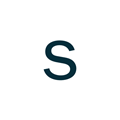South Africa
South African markets digested mixed signals on inflation and policy direction. The Reserve Bank noted easing core inflationary pressures, supporting expectations for a potential rate cut later in the year, though headline CPI rose to a four-month high. On the investment front, venture capital inflows hit a record R13.35 billion, driven by appetite for fintech and healthcare plays, suggesting broader investor confidence in domestic innovation. Visa unveiled its first African data centre in Johannesburg, marking a $57 million commitment to South Africa’s digital economy. Meanwhile, the G20 finance ministers meeting in Durban underscored calls for enhanced multilateral economic coordination.
Europe
European equities gained ground, supported by robust corporate earnings and intensifying trade rhetoric with China. EU Commission officials reiterated demands for Beijing to address persistent trade imbalances and restricted market access, as negotiations ahead of a September summit ramped up. On the corporate side, BNP Paribas reported strong quarterly growth in its FICC division, reflecting client hedging demand amid volatile macro conditions. FTSE-listed firms including Reckitt Benckiser and BT posted solid earnings, bolstering sentiment in London. Meanwhile, EU policymakers floated a streamlined regulatory proposal for capital markets, aiming to improve cross-border investment flows and SME financing mechanisms.
US
U.S. markets responded positively to signs that proposed tariffs on Japanese and EU imports could be lower than expected, alleviating concerns over supply chain disruption. Equity sectors with global exposure saw particular strength, as investor sentiment adjusted to a reduced geopolitical risk premium. However, economic data continued to suggest waning consumer momentum, with updated Treasury forecasts highlighting potential pressure on household demand from lingering cost passthroughs. Analysts warned that despite market relief, policy ambiguity and fiscal drag could limit upside in the second half. Attention now turns to upcoming earnings from tech majors and the Federal Reserve’s Jackson Hole preview.
Asia
Asian equities posted mixed results as investors reacted to developments in U.S.–Japan trade negotiations, which appear to be steering towards reduced tariffs on industrial goods. The potential de-escalation supported Japanese exporters, though broader concerns lingered over Chinese manufacturing softness and its regional spillovers. Chinese policymakers hinted at fresh fiscal support as domestic demand indicators remained subdued. Southeast Asian markets showed resilience, with energy and consumer sectors attracting inflows. Meanwhile, long-term strategic ties between Asia and Africa gained renewed attention following Visa’s investment in South Africa’s digital infrastructure, underlining the region’s growing connectivity with frontier markets.
Currencies
The South African rand traded with increased volatility, reflecting sensitivity to both domestic monetary signals and external trade developments. While cooling core inflation may pave the way for a rate cut later in the year, global tariff noise and capital flow risks kept the currency on a reactive footing. The euro moved in a narrow range after ECB officials hinted at a cautious stance despite persistent inflation in services. The U.S. dollar retained broad support, aided by firm yield differentials and safe-haven flows. Strategists remain focused on currency pairs with high beta to trade policy, with the rand firmly in that cohort.
Commodities
Oil prices advanced for a second session, buoyed by tighter U.S. crude inventories and renewed demand optimism following U.S.–Asia trade de-escalation. The move was reinforced by speculation of potential OPEC+ supply discipline extending into the autumn, which added a bid to front-month contracts. In contrast, gold retreated slightly from recent highs as risk appetite returned to equities, though strategic allocation remains intact amid ongoing geopolitical tensions. In South Africa, platinum and palladium continued to benefit from constrained supply and robust industrial demand, strengthening fiscal forecasts ahead of the October budget and supporting broader sovereign risk sentiment.
Anglo American PLC (AGL) -0.56%
Anglo American reported a mixed second-quarter production update for the period ended 30 June 2025, with continued delivery in Copper and Iron Ore, but pronounced declines across assets earmarked for exit. Copper production totalled 173kt, down 11% year-on-year due to lower Chilean output, though sequential growth was supported by improved throughput at Quellaveco and stronger performance at Collahuasi. Iron Ore rose 2%, with Minas-Rio leading gains. Manganese surged 109% as Australian operations recovered post-cyclone. Conversely, production fell sharply in De Beers (-36%), Steelmaking Coal (-51%) and Nickel (-5%), reflecting asset divestment and operational setbacks. The demerger of Valterra Platinum was completed in May, and sales processes for De Beers, Nickel and Steelmaking Coal are advancing. The group affirmed production and unit cost guidance for continuing operations, with lower costs at Quellaveco offset by increases in Chile. CEO Duncan Wanblad reiterated the group’s strategic pivot to a simplified, higher-margin portfolio, expected to enhance long-term cash generation and asset quality.
Kumba Iron Ore Limited (KIO) +0.56%
Kumba Iron Ore reported a stable operational performance for the six months ended 30 June 2025, maintaining full-year production and sales guidance of 35–37 Mt. Total output was marginally lower at 18.2 Mt, down 1% year-on-year, as the company employed a flexible, integrated production approach across Sishen and Kolomela. Sales rose 3% to 18.7 Mt, supported by improved rail and port logistics. Finished stock remained broadly flat. Despite weaker global steel demand driven by tariff uncertainty, Kumba achieved an average realised FOB export price of US$91/wmt—an 8% premium to the benchmark—highlighting sustained demand for its high-grade product. The UHDMS project continues to progress, aimed at lifting the proportion of premium material and enhancing margins. Kumba reaffirmed its unit cost guidance of US$39/tonne and unchanged capex expectations of R9.5–10.5 billion. CEO Mpumi Zikalala stressed the importance of safety, with fatality-free milestones at both mines, though acknowledged the need to improve the total recordable injury frequency rate of 1.18
Primary Health Properties (PHP) -2.28%
Primary Health Properties delivered a stable interim performance for the six months ended 30 June 2025, with modest growth across key metrics underscoring its defensive positioning within the UK and Irish healthcare property sector. Net rental income rose 3.1% year-on-year to £78.6 million, while adjusted EPS grew by 2.3% to 3.54 pence, ensuring full dividend cover. EPS rose significantly to 4.4 pence, although headline EPS declined 5.9%, reflecting property revaluation dynamics. The portfolio valuation increased to £2.81 billion, supported by strong occupancy of 99.1% and a weighted average lease term of 9.1 years. Government-backed tenants accounted for 88% of rent-roll, reinforcing income security. PHP declared a 2.9% uplift in the interim dividend to 3.55 pence per share. While cost of debt remained flat at 3.4%, available liquidity fell to £107.3 million from £270.9 million, and average debt maturity shortened to 5.1 years. The loan-to-value ratio edged up to 48.6%, which, though manageable, may prompt caution should rates remain elevated. Overall, the results reflect a well-managed, low-volatility income portfolio, albeit with reduced financial flexibility in the current environment.
Alphabet Inc. (GOOGL) +1.02%
Alphabet delivered a strong second quarter, with revenue rising 14% to $96.4 billion and net income up 19%, driven by robust growth in Google Cloud, advertising, and YouTube. Cloud revenue rose 32%, surpassing a $50 billion annualised run rate, as enterprise demand for AI services accelerated. The company raised its capital expenditure guidance to $85 billion for the full year, reflecting increased investment in AI infrastructure and data centres. Core Search remained resilient, while management highlighted AI-driven efficiencies across the business. Despite the solid performance, investors remain watchful of regulatory risks and the long-term return on Alphabet’s elevated capital commitments.
TotalEnergies SE (TTE) -3.52%
TotalEnergies reported a notable drop in second-quarter earnings, with adjusted net income falling by over 20% amid weaker oil and LNG pricing and softer downstream margins. LNG earnings were particularly impacted by excess supply and lower spot prices, while refining and chemicals suffered from shrinking spreads. Despite the earnings pressure, the company maintained its quarterly dividend and confirmed $2 billion in share buybacks for the third quarter. Capital expenditure remains steady, but net debt has increased, raising questions over balance sheet resilience if energy prices remain suppressed. The company’s disciplined payout policy will be closely scrutinised in upcoming quarters.
Puma SE (PUM) +1.82%
Puma downgraded its full-year guidance after reporting weaker-than-expected Q2 sales of €1.94 billion, down 2% year-on-year, as U.S. tariffs weighed heavily on performance. The company now expects low double-digit percentage declines in full-year sales and warned of a potential operating loss before interest and tax. To mitigate margin pressure, Puma is accelerating its “nextlevel” cost-efficiency programme, which includes 500 job cuts, store closures, and reduced marketing spend. One-off restructuring costs could reach €75 million, with capex guidance lowered to €250–300 million. With leadership transitioning to new CEO Arthur Hoeld, execution on cost control and stabilising market share remains paramount.
Do you prefer a full in-depth report you can read offline? Click here to download the full report.






